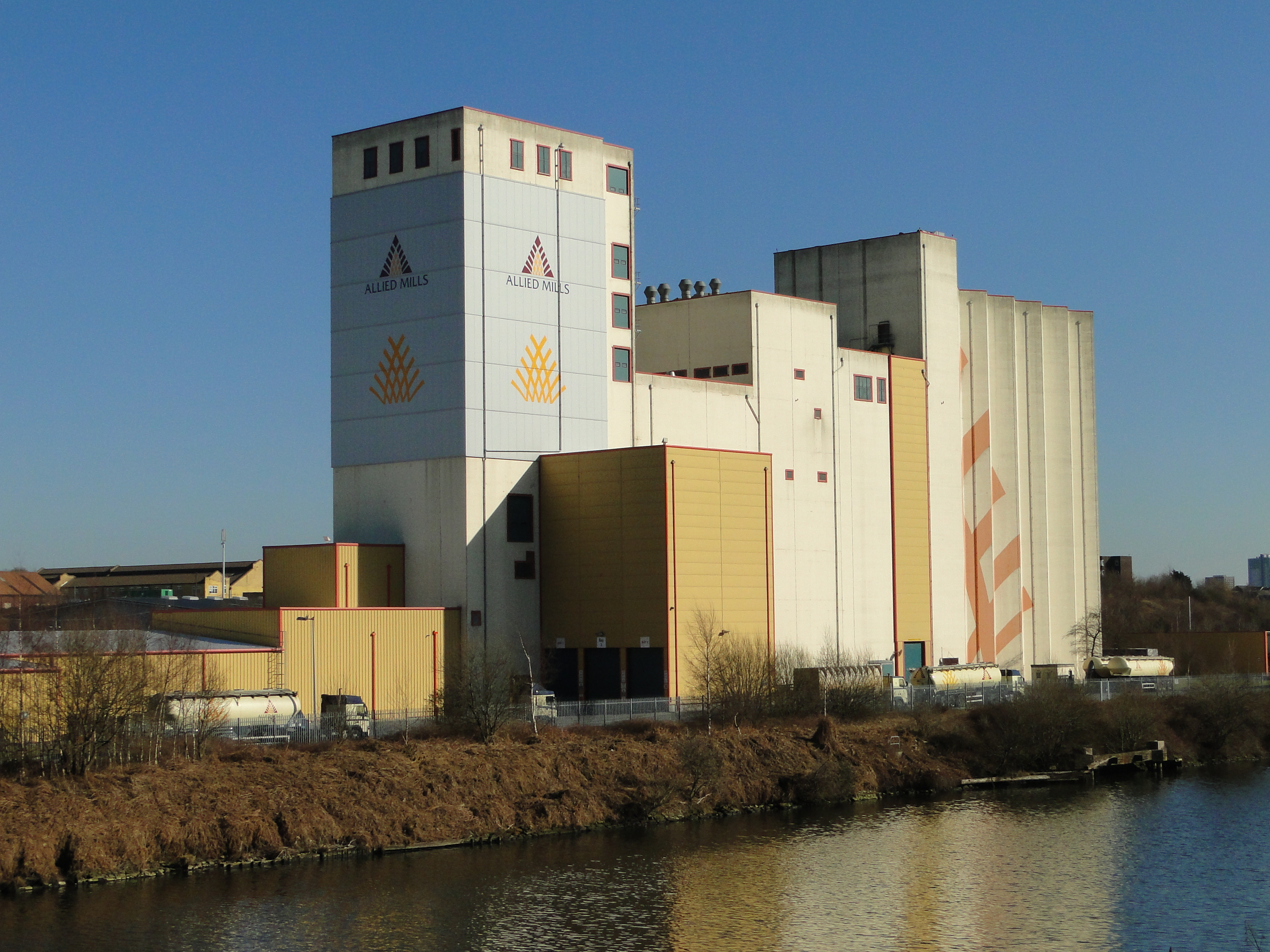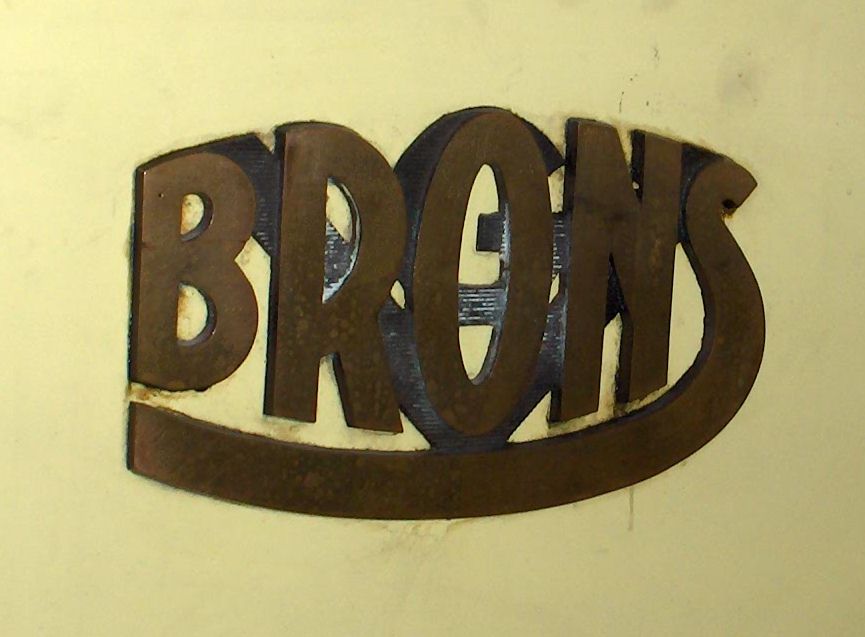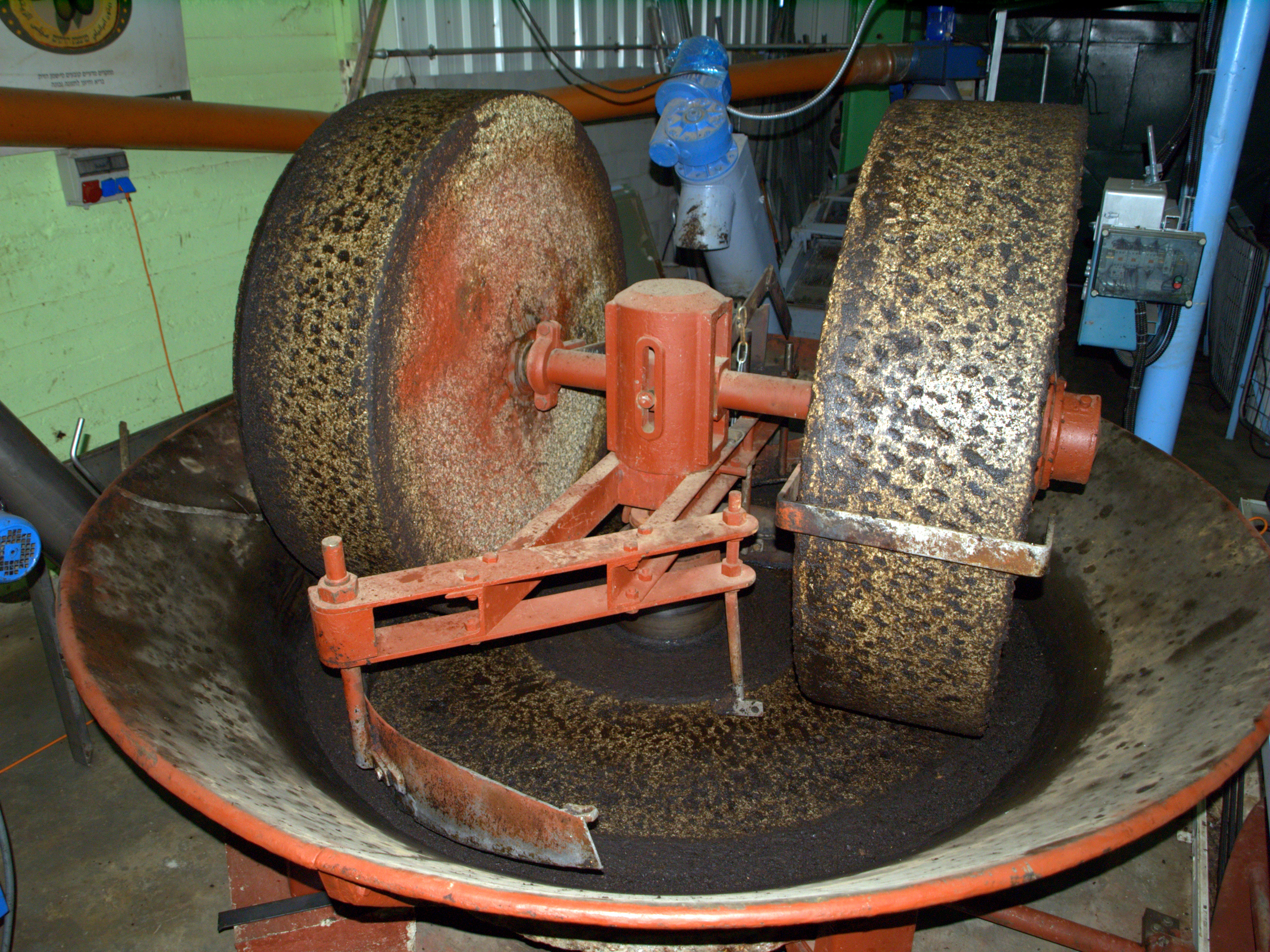|
De Wielewaal, Beneden-Leeuwen
De Wielewaal ( en, The Mule) is a tower mill in Beneden-Leeuwen, Gelderland, Netherlands which was built in 1857 and is in working order. The mill is listed as a Rijksmonument. History ''De Wielewaal'' was built in 1857. It is similar in construction to Zeldenrust, Oss and De Nijverheid, Ravenstein. The three mills were probably built by the same millwright. In the 1930s, improvements were made to the mill. The speed of the millstones was increased by introducing smaller stone nuts. The mill was restored in 1967. In 1999, repairs were done to the sails and stage. The mill was sold to the Gemeente West Maas en Waal in 2002. It is listed as a Rijksmonument, No. 38428. Description ''De Wielewaal'' is what the Dutch call a "Stellingmolen". It is a six-storey tower mill with a stage. The stage is above ground level. The cap is covered in dakleer. The sails are Common sails, which have a span of . They are carried on a cast iron ''windshaft''. The windshaft also carries the ''brake ... [...More Info...] [...Related Items...] OR: [Wikipedia] [Google] [Baidu] |
Grist Mill
A gristmill (also: grist mill, corn mill, flour mill, feed mill or feedmill) grinds cereal grain into flour and Wheat middlings, middlings. The term can refer to either the Mill (grinding), grinding mechanism or the building that holds it. Grist is grain that has been separated from its chaff in preparation for grinding. History Early history The Greek geographer Strabo reports in his ''Geography'' a water-powered grain-mill to have existed near the palace of king Mithradates VI Eupator at Cabira, Asia Minor, before 71 BC. The early mills had horizontal paddle wheels, an arrangement which later became known as the "Water wheel#Vertical axis, Norse wheel", as many were found in Scandinavia. The paddle wheel was attached to a shaft which was, in turn, attached to the centre of the millstone called the "runner stone". The turning force produced by the water on the paddles was transferred directly to the runner stone, causing it to grind against a stationary "Mill machinery#Wat ... [...More Info...] [...Related Items...] OR: [Wikipedia] [Google] [Baidu] |
De Hollandsche Molen
Vereniging De Hollandsche Molen () ( en, Dutch Windmill Association) is a Dutch organization founded in 1923 to preserve windmills in the Netherlands, to document them, and to restore them. Financial support comes from members and from grants by organizations such as the (a Dutch lottery). Their website provides access to a database which documents some 1400 mills in the Netherlands; "Het Nederlands Molenbestand" is authoritative on the topic. The organization is often given credit for organizing a powerful and effective lobby aimed at procuring money from Dutch government institutions to fund restoration projects. Its former president Frederik Stokhuyzen was one of the foremost scholars on Dutch windmills; a recently revised edition of his 1961 book ''Molens'' is still the standard book on the topic. In 1981, Prince Claus of the Netherlands became the organization's patron, and attended ten ceremonies at which windmills were reopened; at his death in 2002 the 12 windmills owned ... [...More Info...] [...Related Items...] OR: [Wikipedia] [Google] [Baidu] |
Rijksmonuments In Gelderland
A rijksmonument (, ) is a national heritage site of the Netherlands, listed by the agency Rijksdienst voor het Cultureel Erfgoed (RCE) acting for the Dutch Ministry of Education, Culture and Science. At the end of February 2015, the Netherlands had 61,822 listed national heritage sites, of which approximately 1,500 are listed as archaeological sites. History and criteria Until 2012, a place had to be over 50 years old to be eligible for designation. This criterion expired on 1 January 2012. The current legislation governing the monuments is the ''Monumentenwet van 1988'' ("Monument Law of 1988"). The organization responsible for caring for the monuments, which used to be called ''Monumentenzorg'', was recently renamed, and is now called Rijksdienst voor het Cultureel Erfgoed. In June 2009, the Court of The Hague decided that individual purchasers of buildings that were listed as rijksmonuments would be exempt from paying transfer tax, effective from 1 May 2009. Previously thi ... [...More Info...] [...Related Items...] OR: [Wikipedia] [Google] [Baidu] |
Agricultural Buildings In The Netherlands
Agriculture or farming is the practice of cultivating plants and livestock. Agriculture was the key development in the rise of sedentary human civilization, whereby farming of domesticated species created food surpluses that enabled people to live in cities. The history of agriculture began thousands of years ago. After gathering wild grains beginning at least 105,000 years ago, nascent farmers began to plant them around 11,500 years ago. Sheep, goats, pigs and cattle were domesticated over 10,000 years ago. Plants were independently cultivated in at least 11 regions of the world. Industrial agriculture based on large-scale monoculture in the twentieth century came to dominate agricultural output, though about 2 billion people still depended on subsistence agriculture. The major agricultural products can be broadly grouped into foods, fibers, fuels, and raw materials (such as rubber). Food classes include cereals ( grains), vegetables, fruits, cooking oils, meat, mil ... [...More Info...] [...Related Items...] OR: [Wikipedia] [Google] [Baidu] |
Grinding Mills In The Netherlands
Grind is the cross-sectional shape of a blade. Grind, grinds, or grinding may also refer to: Grinding action * Grinding (abrasive cutting), a method of crafting * Grinding (dance), suggestive club dancing * Grinding (video gaming), repetitive and uninteresting gameplay * Bruxism, grinding of the teeth * Grind (sport), a sliding stance usually performed in extreme sports such as aggressive skating and boardsports; Grinds (skateboarding) * Grind (whaling), pilot whale hunting in the Faroe Islands * Grinds, private tutoring, in Ireland * Mill (grinding) * Grinding, the operation of the winches on a yacht; the work done by a grinder (sailing position) Geography * Grind, a village in Lăpugiu de Jos Commune, Hunedoara County, Romania * Grind (Unirea), a tributary of the Unirea in Cluj and Alba Counties, Romania Film and TV * ''Grind'' (2003 film), about amateur skaters * ''The Grind'' (1915 film), a silent movie * ''Grind'' (1997 film), starring Billy Crudup and Adrienne Shell ... [...More Info...] [...Related Items...] OR: [Wikipedia] [Google] [Baidu] |
Tower Mills In The Netherlands
A tower is a tall structure, taller than it is wide, often by a significant factor. Towers are distinguished from masts by their lack of guy-wires and are therefore, along with tall buildings, self-supporting structures. Towers are specifically distinguished from buildings in that they are built not to be habitable but to serve other functions using the height of the tower. For example, the height of a clock tower improves the visibility of the clock, and the height of a tower in a fortified building such as a castle increases the visibility of the surroundings for defensive purposes. Towers may also be built for observation, leisure, or telecommunication purposes. A tower can stand alone or be supported by adjacent buildings, or it may be a feature on top of a larger structure or building. Etymology Old English ''torr'' is from Latin ''turris'' via Old French ''tor''. The Latin term together with Greek τύρσις was loaned from a pre-Indo-European Mediterranean language, ... [...More Info...] [...Related Items...] OR: [Wikipedia] [Google] [Baidu] |
Windmills Completed In 1857
A windmill is a structure that converts wind power into rotational energy using vanes called windmill sail, sails or blades, specifically to mill (grinding), mill grain (gristmills), but the term is also extended to windpumps, wind turbines, and other applications, in some parts of the English speaking world. The term wind engine is sometimes used to describe such devices. Windmills were used throughout the High Middle Ages, high medieval and early modern periods; the horizontal or panemone windmill first appeared in Persia during the 9th century, and the vertical windmill first appeared in northwestern Europe in the 12th century. Regarded as an icon of Culture of the Netherlands, Dutch culture, there are approximately 1,000 windmills in the Netherlands today. Forerunners Wind-powered machines may have been known earlier, but there is no clear evidence of windmills before the 9th century. Hero of Alexandria (Heron) in first-century Roman Egypt described what appears to be a ... [...More Info...] [...Related Items...] OR: [Wikipedia] [Google] [Baidu] |
Windmills In Gelderland
A windmill is a structure that converts wind power into rotational energy using vanes called sails or blades, specifically to mill grain (gristmills), but the term is also extended to windpumps, wind turbines, and other applications, in some parts of the English speaking world. The term wind engine is sometimes used to describe such devices. Windmills were used throughout the high medieval and early modern periods; the horizontal or panemone windmill first appeared in Persia during the 9th century, and the vertical windmill first appeared in northwestern Europe in the 12th century. Regarded as an icon of Dutch culture, there are approximately 1,000 windmills in the Netherlands today. Forerunners Wind-powered machines may have been known earlier, but there is no clear evidence of windmills before the 9th century. Hero of Alexandria (Heron) in first-century Roman Egypt described what appears to be a wind-driven wheel to power a machine.Dietrich Lohrmann, "Von der östlichen z ... [...More Info...] [...Related Items...] OR: [Wikipedia] [Google] [Baidu] |
Diesel Engine
The diesel engine, named after Rudolf Diesel, is an internal combustion engine in which ignition of the fuel is caused by the elevated temperature of the air in the cylinder due to mechanical compression; thus, the diesel engine is a so-called compression-ignition engine (CI engine). This contrasts with engines using spark plug-ignition of the air-fuel mixture, such as a petrol engine (gasoline engine) or a gas engine (using a gaseous fuel like natural gas or liquefied petroleum gas). Diesel engines work by compressing only air, or air plus residual combustion gases from the exhaust (known as exhaust gas recirculation (EGR)). Air is inducted into the chamber during the intake stroke, and compressed during the compression stroke. This increases the air temperature inside the cylinder to such a high degree that atomised diesel fuel injected into the combustion chamber ignites. With the fuel being injected into the air just before combustion, the dispersion of the fuel is une ... [...More Info...] [...Related Items...] OR: [Wikipedia] [Google] [Baidu] |
Brons
Brons, named after Jan Brons, was a Dutch engine manufacturer in Appingedam that existed from 1907 to 2004. The company made more than 4000 engines for large machines such as ships, tractors, and busses. The company is notable for its early stationary industrial motors and ship engines, but also for an early 1899 prototype light omnibus called "The Brons". History Jan Brons (January 20, 1865 – February 9, 1954) first developed an autobus with a motor that ran on petroleum in 1890, but because he wanted it to run on petrol he then created the omnibus in 1899. It was for this omnibus that he later bought a patent (in Germany, because it was not possible to get a patent for it in the Netherlands). The bus was in service for some years until it broke a wheel. It was never in production. When Rudolf Diesel developed the diesel motor in the 1890s, Brons found it to be too complicated and invented a type of "spray cup" he called the "''verstuiverbak''" or "''bakjesknapper''" to s ... [...More Info...] [...Related Items...] OR: [Wikipedia] [Google] [Baidu] |
Millstones
Millstones or mill stones are stones used in gristmills, for grinding wheat or other grains. They are sometimes referred to as grindstones or grinding stones. Millstones come in pairs: a convex stationary base known as the ''bedstone'' and a concave ''runner stone'' that rotates. The movement of the runner on top of the bedstone creates a "scissoring" action that grinds grain trapped between the stones. Millstones are constructed so that their shape and configuration help to channel ground flour to the outer edges of the mechanism for collection. The runner stone is supported by a cross-shaped metal piece (millrind or rynd) fixed to a "mace head" topping the main shaft or spindle leading to the driving mechanism of the mill (wind, water (including tide) or other means). History The earliest evidence for stones used to grind food is found in northern Australia, at the Madjedbebe rock shelter in Arnhem Land, dating back around 60,000 years. Grinding stones or grindstone ... [...More Info...] [...Related Items...] OR: [Wikipedia] [Google] [Baidu] |
Dakleer
Bituminous waterproofing systems are designed to protect residential and commercial buildings. Bitumen (asphalt or coal-tar pitch) is a mixed substance made up of organic liquids that are highly sticky, viscous, and waterproof. These systems are sometimes used to construct roofs, in the form of roofing felt or roll roofing products. Roofing felt Roofing felt (similar to tar paper) is the base material used to make roof shingles and roll roofing. Used for decades as waterproof coverings in residential and commercial roofs, these bitumen compositional membranes incorporate two layers. The first underside polymer membrane is used as a solid background, often reinforced with glass fibers. Mineral granules make up the self-protective top layer, with a final bituminous mixture encapsulating them both. Typical uses of felt paper are as an underlay(ment) ( sarking) beneath other building materials, particularly roofing and siding materials, and is one type of membrane used in asphalt ... [...More Info...] [...Related Items...] OR: [Wikipedia] [Google] [Baidu] |







